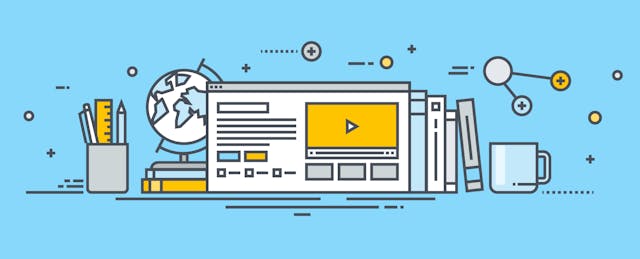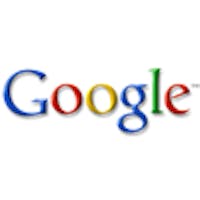"Digital skills are vital for students today because this is what their jobs will look like in the future," says veteran middle school teacher Kay Vanzant-Bradney of Nelson Academy in Long Beach, California. "And given our circumstances right now, with the pandemic and remote learning, if you don't have digital skills, you literally can't connect with your education."
This is why her students use Google's Applied Digital Skills, a free, video-based, online digital literacy curriculum. Through flexible project-based learning, each lesson teaches foundational digital and technological skills. Students learn to solve real-world problems, like how to craft resumes, design infographics and create interactive presentations from scratch.
“I love the way that Applied Digital Skills lessons mimic what people actually do in the real world. This is how adults in tech right now collaborate and work remotely together, using this kind of technology and communication all over the world. We're not playing at something at school. This is exactly what it's like in the workforce, ”she explains.
Technological advancements and fundamental shifts in how we use technology to communicate, learn and work together define our lives in the 21st century. Nearly two-thirds of all jobs in the US require medium or advanced digital skills, and this number is only increasing with accelerating technological changes across all sectors. Students today need basic digital literacy to be successful in any career or field they pursue. The capacity to manage complex tasks and projects using computers, mobile devices and other technology is given. So is the ability to use technology for communication, collaboration, critical thinking and creative problem-solving — all invaluable 21st-century skills, necessary for thriving in our increasingly global and interconnected world.
Additionally, with COVID-19 disrupting education systems everywhere, it's more important than ever that today's students are equipped with basic digital and technological literacy to ensure they can get the most out of remote learning. Even before the pandemic, less than half of 18-25 year olds believed their education gave them the skills they needed to succeed in the workforce. Applied Digital Skills is working to bridge this gap.
We spoke with Vanzant-Bradney about her successes utilizing Applied Digital Skills with her middle school students and how educators can use digital literacy tools to enhance remote learning.
EdSurge: Why is digital literacy important? How has the pandemic shifted the kinds of skills that students need?
Vanzant-Bradney: If you look at our circumstances right now with remote learning, it's pretty much impossible for students that are struggling with basic digital and technology skills to connect with their education. That underlines the importance of having these skills even more than before. We talk a lot about 21st-century skills, but then we give students a pencil and a piece of paper and say, "Here, look it up in your book." Even the way that our schedules are set up and our classrooms are put together — we are still using that old model.
The pandemic has given us a chance to hit the reset button on a lot of things, and education is one of them. We've been given an opportunity to really catch up with what the rest of the world is doing, and it's forced us all to learn new skills. I keep pushing my colleagues. “Oh, you don't know how to use Google Sheets? Here, go to Applied Digital Skills. There is a whole set of lessons, both for your students and for you. " It's helping teachers develop and grow, and that always helps students too.
What do you find most helpful about Applied Digital Skills?
The lessons are all ready to use, and I don't have to try to build content for kids at different skill levels. It's especially noticeable when you're working with one kid who knows how to code and uses multiple screens at home in the same class with another kid who is asking where the power button is. With the lessons on Applied Digital Skills, the more proficient kid can just take it and run, and I don't have to explain step-by-step how to use each tool. Especially if that more experienced student already knows how to use Google tools, it's easier for them to get right to the project part of the lesson.
I also love that each lesson shows the range and flexibility of each tool. A lot of teachers know how to use Google Slides, for example. But if you do the If-Then Adventure Story, you learn how to link the slides, and that leads into website development. You can then start using Google Sites, which teaches real-world, web development skills. The same thing with another lesson that's about planning an event, or using a spreadsheet to create a guide to an area, but you're not doing anything with numbers. Instead, you're learning how to use spreadsheets for organization, in addition to thinking about them as tools for something like accounting.
What's a favorite lesson or project you've facilitated using these tools?
The Create a Scrapbook lesson is great. It's basically making a slide deck, but students learn more sophisticated actions too, like how to embed video or crop and use shapes with pictures. With my history class, I ask them to pretend they are a historical figure, like Hammurabi, the ancient Babylonian king, and they have to make a scrapbook from his perspective, telling me about their reign. I align the assignment with standards too, so they have to talk about the impact of the law code, both in his time and in the future, and consider how they're going to do that as a man who lived in 1000 BC. Students take that historical perspective, connect it to the present, and get creative with demonstrating their knowledge. It also gives them a chance to show how they can synthesize all the information they researched. They are not just giving me facts. It's not just a report of information. The digital scrapbook format gives them the opportunity to go further with what they learn. It also gets them ready for high school, where more of the classes have project-based learning.
What advice do you have for other educators trying to enhance their students' remote learning experiences?
The biggest thing is to keep learning yourself, but also to keep it simple. We are being inundated with edtech options left and right, but since we are all communicating through Google tools already, why don't you try picking one and see how you can use it to teach your content, or get the kids to express what they are have learned, or use one of the tools to give input? Just take it one step at a time, and be the learner too. That's really the best thing about Applied Digital Skills—you, the teacher, can be the learner and see for yourself how it can work and apply to your situation.
Are there any features that stand out to you and make a big difference in teaching?
The teacher dashboard is amazing. I love it because I can see where the students are, if they watched the video or not, if they filled out the survey or not, and if they uploaded their document. I can see where every kid is and how they’re progressing through the material.
The dashboard really is a huge asset because it’s like the COVID-quarantine version of classroom management. It’s not like you’re walking around the classroom and saying, “Sit down. Stop talking to your neighbor,” but you are asking yourself, “Are the kids progressing?” If I see that a kid isn't moving, then I need to investigate this. “Why aren’t they moving from Lesson 1? They have been there for a week. What’s going on?” The dashboard helps me do that seamlessly.
Is there anything else you'd like to talk about that we haven't covered?
I was so grateful that, when we first transitioned to fully remote teaching, Google’s Applied Digital Skills tools were already there. It wasn’t like a lot of companies who started giving us the free version of this and that, with superficial engagement. This was like, “We know you're using these tools. It's hard right now. Here are some suggestions and support.”
Every exchange I had with them felt genuine and real, and my colleagues and I all took advantage of that for our classrooms. You could just see everything had been so well thought out in the first place, where there are always new lessons being offered and new suggestions on how to use it, and the whole teach-at-home thing they set up was timely and useful. They paid attention to what teachers need, and we really appreciate it.



